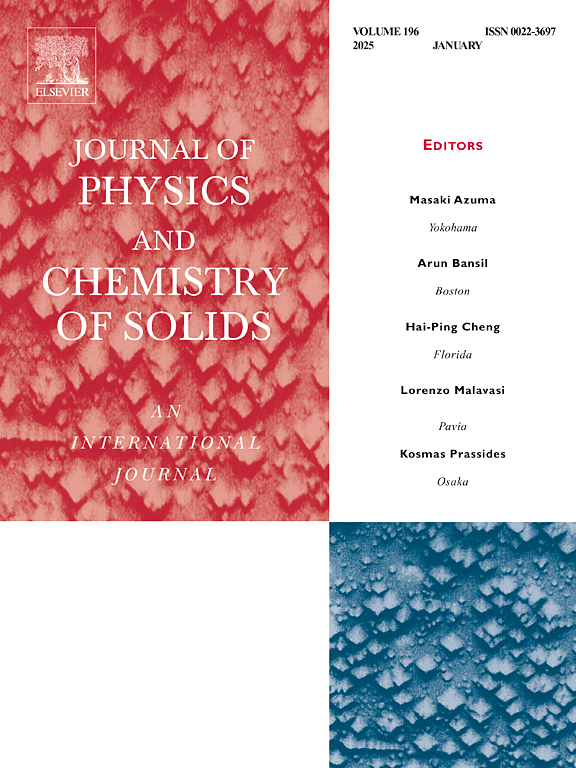纳米结构与高多孔,厚,稳定的阳极膜在304不锈钢高性能超级电容器
IF 4.3
3区 材料科学
Q2 CHEMISTRY, MULTIDISCIPLINARY
引用次数: 0
摘要
不锈钢(SS)箔上通过恒流阳极氧化形成的纳米多孔氧化层在长时间阳极氧化过程中往往面临阳极膜部分剥离的挑战,这限制了膜厚度的显著增加,从而限制了其比表面积电容。在本研究中,我们提出了一种通过长期恒压阳极氧化制备超厚纳米多孔氧化膜的方法,有效地减轻了剥离效应。通过调节阳极氧化电压,可以精确控制氧化膜的孔隙率、厚度和电导率。其中,厚度为26.9 μm的氧化膜在50 V时具有高孔隙率和低电导率。当电压增加到75 V时,氧化物的厚度变厚(32.2 μm),孔隙率降低。两种氧化膜的孔径沿厚度方向呈梯度分布,有助于阳极膜与衬底之间更稳定的接触。更薄的氧化膜在1ma cm - 2时达到了破纪录的215 mF cm - 2的面积电容值。这种稳定的阳极膜具有可调的孔隙率、厚度和导电性,在高性能超级电容器中具有很大的应用潜力。本文章由计算机程序翻译,如有差异,请以英文原文为准。
Nanoarchitectonics with highly porous, thick, stable anodic films on 304 stainless steel for high- performance supercapacitors
The nanoporous oxide layer formed on stainless steel (SS) foils through constant current anodization typically faces the challenge of partial detachment of the anodic film during prolonged anodization, which limits the significant increase in film thickness and thus restricts its specific surface area capacitance. In this study, we propose a method to prepare ultra-thick nanoporous oxide films through long-term constant voltage anodization, effectively mitigating the detachment effect. By adjusting the anodization voltage, the porosity, thickness, and conductivity of the oxide film can be precisely controlled. Specifically, the oxide film with a thickness of 26.9 μm shows a high porosity and low conductivity at 50 V. As the voltage increases to 75 V, the oxide exhibits a thicker thickness (32.2 μm), and the porosity decreases. Both oxide films exhibit a gradient distribution of pore size along the thickness direction, contributing to more stable contact between the anodic film and the substrate. The thinner oxide film achieves a record-breaking area capacitance value of 215 mF cm−2 at 1 mA cm−2. The stable anodic film, with its tunable porosity, thickness, and conductivity, has great potential for applications in high-performance supercapacitors based on stainless steel foils.
求助全文
通过发布文献求助,成功后即可免费获取论文全文。
去求助
来源期刊
CiteScore
7.80
自引率
2.50%
发文量
605
审稿时长
40 days
期刊介绍:
The Journal of Physics and Chemistry of Solids is a well-established international medium for publication of archival research in condensed matter and materials sciences. Areas of interest broadly include experimental and theoretical research on electronic, magnetic, spectroscopic and structural properties as well as the statistical mechanics and thermodynamics of materials. The focus is on gaining physical and chemical insight into the properties and potential applications of condensed matter systems.
Within the broad scope of the journal, beyond regular contributions, the editors have identified submissions in the following areas of physics and chemistry of solids to be of special current interest to the journal:
Low-dimensional systems
Exotic states of quantum electron matter including topological phases
Energy conversion and storage
Interfaces, nanoparticles and catalysts.

 求助内容:
求助内容: 应助结果提醒方式:
应助结果提醒方式:


